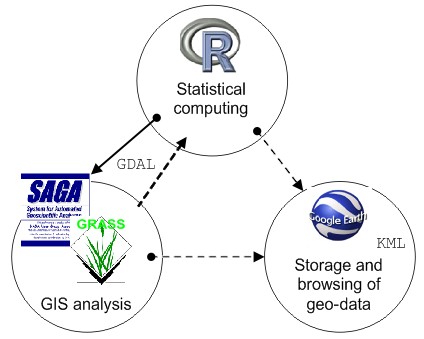Here are the results of the e-democracy and society meeting discussion. We received 29 votes from 64 registered members (44%). Considering future organization of the society 45% of members confirmed that they prefer to keep the society of small size, while 45% of members believe that we should try to get anybody working with DEMs involved with this society.
Considering the name of the society, 89% of members find the current name “geomorphometry” more appropriate than “terrain analysis” (11%). One member proposed that the official name should be “Geomorphometry: the science of digital terrain analysis”, which seem to be the best compromise between the two alternatives. A large majority of members (90%) believes that the focus of geomorphometry should be on both technology and methods.
Considering the organization of future meetings, majority of members (48%) believes that the registration costs of the conference should not exceed 100 USD per day, however, 37% of members also do not mind the costs of registration if the programme is good. Most of people nominated Ian Evans (38%) and John Gallant (11%) for the chair, and Tomislav Hengl (52%) and Ross Purves (11%) for the vice-chairs. Both of the first nominated candidates have accepted this nomination and will represent the society until the next conference (2011). The chair and vice-chair will take further steps to organize the next meetings, regularly send information and news to all registered members (geomorphometry mailing list), and facilitate various workshops and international collaboration. They will also ensure that the coming meetings follow some quality requirements, e.g. that they focus on the topics of interest to geomorphometry society, that the first call is send on time, that enough information is provided for international visitors etc.
Considering the location of the next conference, 41% of members would like that the next geomorphometry conference stays in Europe, 31% of members would like to leave the decision to the scientific committee, 17% voted for North America. We discussed the dangers of having two conferences in a line on the same continent, and concluded that possibly the best decision will be to organize the next conference in USA, considering that the TADTM conference in 2006 was in China, 2009 was in Europe, so that this seems to be the most logical solution.
In the final block of the society meeting, we have carefully discussed advantages and disadvantages of having a more formally organized society and possible alternatives: e.g. optional merging with some other (bigger) research group such as International Association of Geomorphologists, GIS societies, ISPRS and similar. We concluded that (1) geomorphometry is a distinct field that certainly has an audience and future (especially considering the recent development of LiDAR technology, new geo-visualization tools and new fields of application); (2) place of the next meeting and similar organizational issues should be decided upon during the running conference to ensure sustainability; (3) geomorphometry should try to connect all people involved with production and processing of DEMs and surface models.
e_democracy_2009.xls



